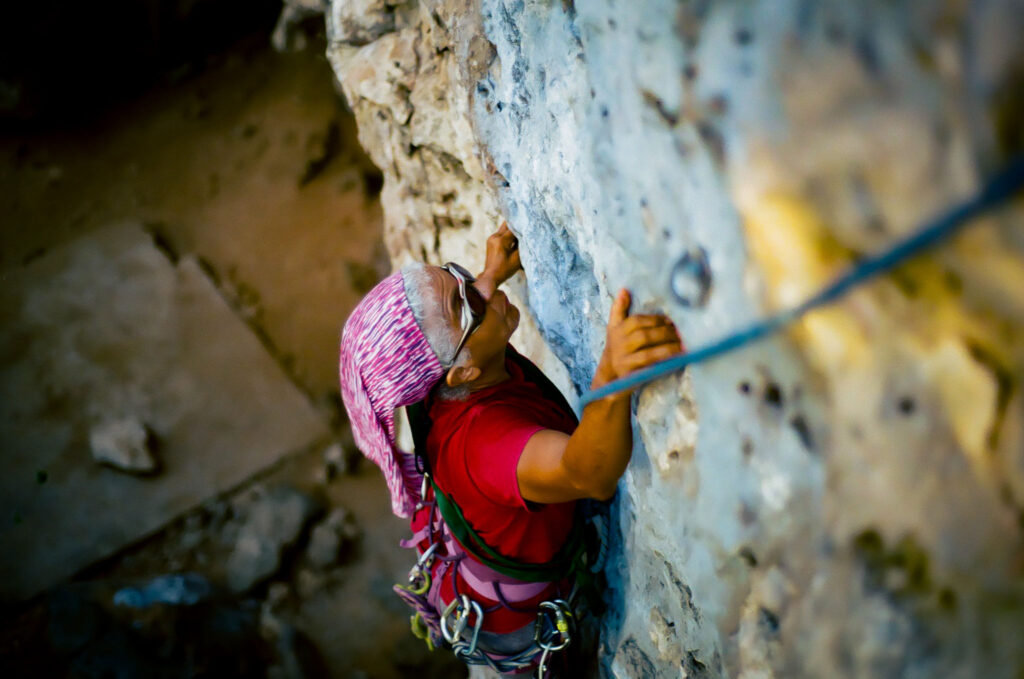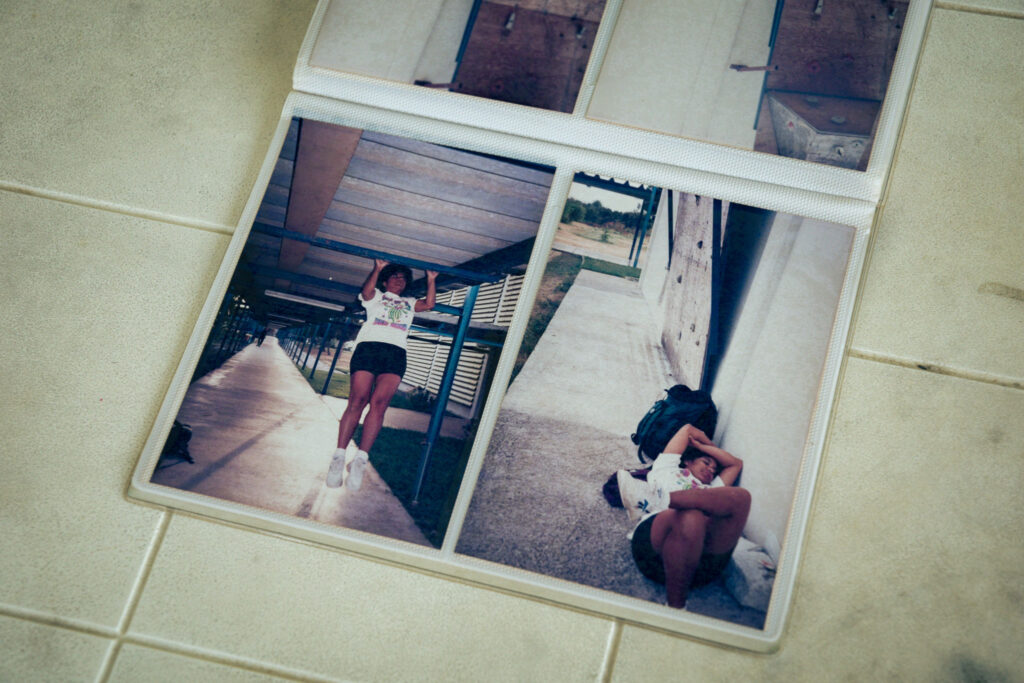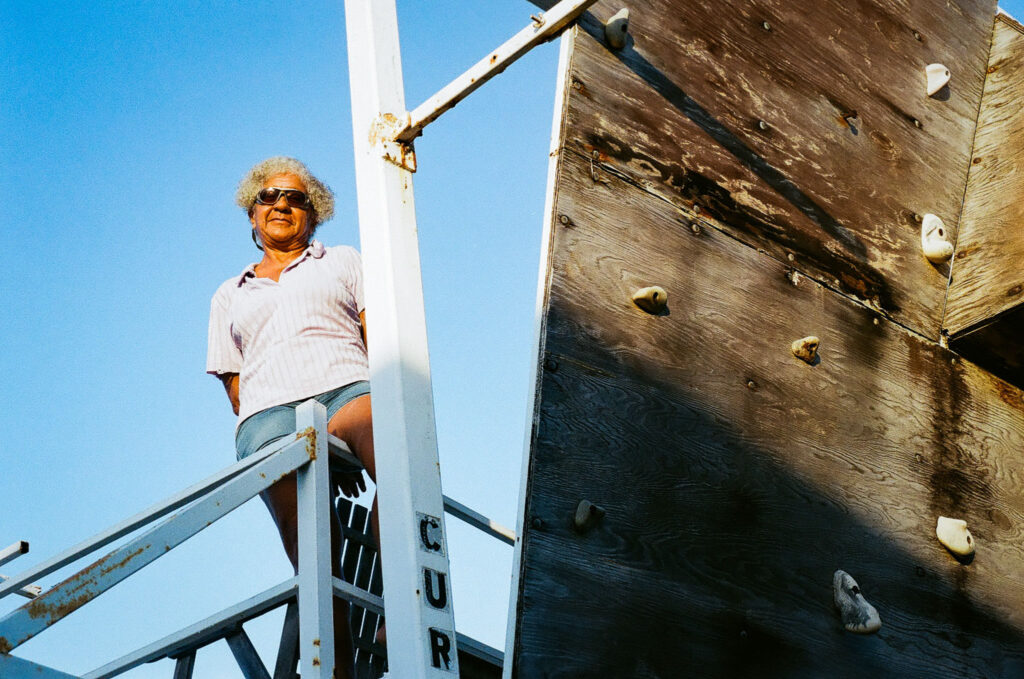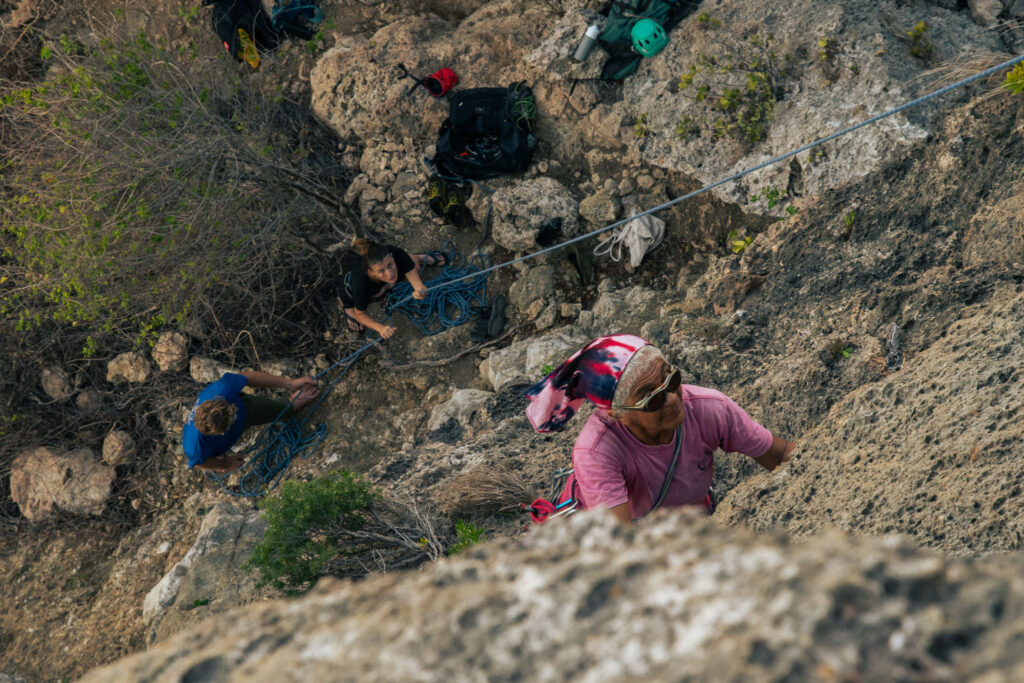Imma is a Curaçaoan climber, but the first time she went rock climbing was not on her native island, but in Germany in 1986. She was 25 and pursuing her PhD as a mathematician in Nijmegen. A friend had asked her to go climbing. But Imma thought that was an absolutely crazy idea. And the additional thought of having to camp out during the trip, and sleep in a tent (with someone!), did not particularly appeal to her either. After all, she had been raised as a decent Curaçao girl and knew nothing of ‘outdoor life’.
She was convinced and ended up joining anyway. As she had feared, she hated the camping. But the climbing itself did turn out to have an immediate appeal to her. She was immediately thrown into the deep end though. The explanation about belaying was quick and brief. It ended with the sentence: “Above all, don’t let go of the rope so I don’t fall to my death…”

Her climbing partner climbed ahead and gradually disappeared from view. A yell from above indicated that it was her turn to follow. “I didn’t have a choice now but to start climbing,” she says. “I was wearing an old pair of sneakers. No climbing shoes or anything. But after the first few steps I realized that I was doing pretty well. The specific kinds of movements you have to make with your body, the balance it requires, the puzzle you have to solve to get to the top in one piece. It didn’t take long before I was sold.”
Quickly after that trip, she learned to lead climb and started climbing more regularly. Two years later she moved to the US to take up a position as a university professor. Here she found a wealth of climbing opportunities in the North American outdoors. She also found a vibrant climbing community. She climbed at least two or three times a week. During weekends and holidays she traveled to climbing destinations throughout the country. She had even started to enjoy camping and being outside.

After seven years in the US, she spent her sabbatical year in Curaçao at the request of her partner. As far as she knew, there was no climbing on the island, but she did want to continue training. So the condition for her return was that her partner would build her a climbing wall on campus at the UNA (University of the Netherlands Antilles). It became the first – and for the longest time only – climbing wall in Curaçao.

“You could only use the thing if you knew what you were doing. The holds at the bottom were so tiny that no one else could climb on them. It was mainly intended for me to train there myself, not for public use or to popularize the sport on the island or anything. I hadn’t thought about that. I just wanted to stay in shape for when I’d return to the US.”
After going back to the US, she regularly visited Curaçao and started developing climbing routes herself at the Hato Valley. “Those routes are now completely overgrown. I can’t even find them myself. And I hadn’t told anyone about them because as far as I knew, no one else climbed in Curaçao. In fact, if you talked to anyone about it, they looked at you crazy… ‘Far too dangerous! Do you want to fall to your death?!’”

She and her partner eventually moved back to Curaçao permanently. And while he was still alive, they would travel the world for climbing. It was only recently, in 2018, that Imma heard that some people had started climbing on Curaçao. Some Venezuelan and Dutch climbers had teamed up with local nature lovers and started developing routes on the island. Nowadays there are spots at Roi Rincon, Seru Pretu, Fort Beekenburg, Seru Kabritu, Daniel and on Tafelberg.
Imma now does most of her climbing on her own native island, at least once a week, with some close friends from the small climbing community that has formed on the island. She is without a doubt the most experienced one of them all though. “I’m over sixty now,” she explains, “so I don’t necessarily have to climb the most difficult routes anymore. But the body movements and the balance that you need, still make climb just as satisfying to me as it ever was.”

Islands is a series of portraits of people who have a unique hobby or lifestyle on the Caribbean island of Curaçao. They are ‘islands unto themselves’, who can be seen as ‘strange’ locally, but often turn out to be a source of culture and inspiration for the island. Words and photography by Lyangelo Vasquez
